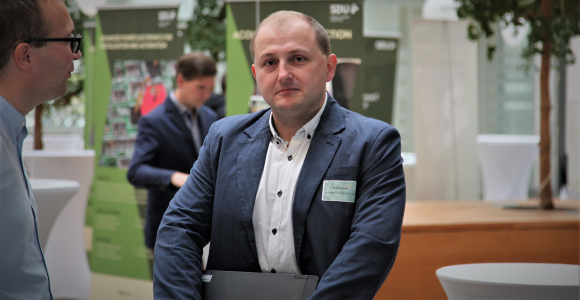
The invisible threat: Microplastics from the sea end up on your plate
Every year, thousands of tonnes of microplastics are emitted in Denmark. No one knows exactly where it ends up or how dangerous it is for the environment or humans. The PlastTrack project at the University of Southern Denmark, which has received €1.8 million from Interreg Deutschland-Denmark, will investigate this and develop tools to combat plastic pollution in our region.
A year ago, microplastics were found in human blood for the first time. As many as 80 per cent of 22 blood samples contained residues of one or more types of plastic. The researchers' discovery, published in the scientific journal Environment International, shows that particles can float around in the blood and be stored in our organs.
Microplastics are a global as well as a local problem. Particles have been found on top ofMount Everest and at the bottom of the deepest oceans. In the Baltic Sea, microplastics have been found in 28 per cent of all fish sampled.
"Detailed research is needed on how micro- and nanoplastics affect not only nature but also our bodies. At the same time, there are major gaps in our knowledge about where the plastic in the oceans comes from, how it degrades and where it ultimately ends up."
So says associate professor Jacek Fiutowski from the Mads Clausen Institute at SDU. The researcher is spearheading the Interreg project PlastTrack,which - based on water samples from the Baltic Sea - will develop tools to track the path of plastic waste and reveal how plastics change in different environments and have an impact on them.
 Jacek Fiutowski
Jacek Fiutowski
It’s urgent
A major report published in 2019 by the UN agency World Health Organisation (WHO) concludes that these tiny plastic particles are everywhere and that we consume them on a daily basis. Marine animals mistake microplastics in the sea for food as they resemble plankton.
"When we eat seafood, there is therefore a risk that we are also ingesting microplastics through the food on our plate," says Jacek Fiutowski.
Every year, 8-15 million tonnes of plastic are discharged into the world's oceans, equivalent to one lorry per minute, and this is expected to double by 2025. If current trends continue at the same rate, by 2050 there will be more plastic than fish in the world's oceans.
"We do not know the rate of degradation of plastics in the oceans, nor do we have a thorough understanding of how plastics affect the marine environment. That is why we will map micro- and nanoplastics in the PlastTrack project. In addition, we will develop sampling methods that will allow us to take necessary measures to limit plastic pollution in the region," says Jacek Fiutowski.
The researcher goes on to say that the aim is also to develop testing methods for new materials, such as biodegradable plastics, which could be a real green alternative to the plastics we use today.
Specialists from both sides of the Danish-German border
There are many ways to measure plastic particles. However, the smaller the plastic particles are, the more similar they are to other substances of organic origin, which is why it is necessary to use very different methods to track plastics. Therefore, the project brings together a range of specialists in nanotechnology, oceanography, imaging and spectral analysis.
"In the last few years, we have built up competences and instruments in Sønderborg for chemical characterisation at the microscale - especially Raman-based methods. I am delighted that the project now gives us the opportunity to apply these methods in cooperation with our colleagues at DAMBIC (Danish Molecular Biological Imaging Center) in Odense and in this way find solutions to the world's plastic problems", says Horst-Günter Rubahn, professor and Head of the Mads Clausen Institute.
Facts
The PlastTrack project has received approximately €1.74 million in Interreg funding. The lead partner is the Mads Clausen Institute, University of Southern Denmark in Sønderborg. Other partners are DAMBIC at SDU Odense, NEWTEC Engineering A/S, CLEAN - Environmental Cluster Denmark, Alfred Wegener Institute (AWI) and GEOMAR Helmholtz Centre for Ocean Research Kiel. The latter is one of the world's leading institutions in the field of marine research.
Microplastics
Microplastics are defined as small pieces of plastic that are less than five millimetres in size. The majority of microplastics are so small that they cannot be seen with the naked eye. Due to the movement of ocean currents, microplastics can be found anywhere in the world.
Microplastics come from different sources. When plastic somehow ends up in the sea or nature, it is gradually broken down by water and sunlight into smaller and smaller pieces. It does not dissolve but instead becomes several smaller parts. Ultimately, microplastics become nanoplastics - and thus have the ability to permeate cell membranes, making the material potentially very dangerous.